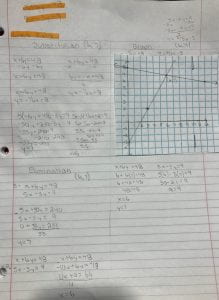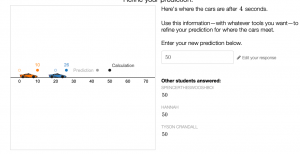Frances Kissling writes, “Are we not capable of walking and chewing gum at the same time; of valuing life and respecting women’s rights?” The Roe vs Wade decision was a landmark Supreme Court case surrounding the topic of abortion and allowed abortions across the country. In the decision, the court split the pregnancy into three trimesters where different laws applied to each. In the first trimester, the state cannot regulate abortions, whereas, in the second, it may place some regulations. In the third trimester, it can regulate and outlaw abortions as long as the health of the mother is considered. In the following years, states have created regulations such as bans on partial-birth abortions and heartbeat bills, which have created controversies between pro-life and pro-choice activists. The Roe vs Wade decision protects women’s rights and health and should not be overturned because it is protected under the 14th amendment, is supported by a majority of Americans, and can affect the health
of women.
In the Roe vs Wade decision, the Supreme Court Justices decided abortion’s place within the fourteenth amendment. When explaining the court’s decision, J. Shoshana Ehrlich said, “it had identified a right of privacy in a variety of contexts, including activities related to marriage, procreation, contraception, child-rearing, and education, the Court held that the “right of privacy … founded in the Fourteenth Amendment’s concept of personal liberty and restrictions upon state action … is broad enough to encompass a woman’s decision whether or not to terminate a pregnancy.” Based on cases reaching back as far as 1891, the court identified the parameters of a right to privacy and the place of abortion within the amendment. They decided that the right to privacy encompassed the right to abortion. These laws are similar to those protecting a patient’s right to refuse medical treatment. Although morally questionable, it is ultimately up to the patient. In an attempt to argue for the rights of a fetus, the state of Texas stated that denying a fetus life violated their fifth amendment rights of life, liberty, and property. In their decision, “…the Supreme Court ruled that embryos and fetuses have “potential human life,” but are not protected by the Constitution,” (Lee). Since the question of when life begins has been a long unanswered question, the Supreme Court was unable to grant a fetus constitutional rights. Due to this, all and any amendments that protect life are deemed obsolete for fetuses.
Although overturning Roe vs Wade is a priority for many in positions of power, a majority of Americans voted against overturning the decision. According to Lydia Saad, “Forty years after the Supreme Court issued its opinion in Roe v. Wade, significantly more Americans want the landmark abortion decision kept in place rather than overturned, 53% to 29%.” The monumental case has made several headlines throughout the years due to new restricting state laws or plans to overturn the law. When the public is asked, however, it is clear that significantly more Americans do not want to see the case overturned. Many Americans have also distinguished themselves as pro-life or pro-choice activists. According to Lydia Saad, “…48% call themselves “pro-choice” and 44% “pro-life.” The results from the survey show the American publics’ thoughts on the issue. Although it is controversial and has been long debated for years, the American public does not want to see Roe vs Wade overturned.
In the case that Roe vs Wade is overturned, the side effects will impact many women and families. Often, when abortion is illegal, women search for alternate methods of termination. This includes untrustworthy doctors, self-induced miscarriages, or suicide. These processes are done in unsanitary conditions and with no post-surgical care. According to Nancy Sprague, “When this happens, the potential complications are numerous and frightening: they include inflammation, infection, hemorrhage, kidney failure, infertility, and an increased tendency toward future miscarriages.” Treating complications have a large financial cost to society and the healthcare system and lead to thousands of deaths worldwide. According to Nancy Sprague, “It is estimated that up to 78,000 deaths occur each year as a result of the approximately 20 million illegal and unsafe abortion procedures that take place worldwide.” Even when 81 countries allow abortions with small restrictions, 78,000 thousand deaths occur worldwide, not including other health complications. If Roe vs Wade was overturned, can you imagine how much greater this number would be?
Many argue that the 14th amendment was not meant to protect a right to abortion. According to J. Shoshanna Ehrlich, “In dissent, Justices Byron White and William Rehnquist took the Court to task for fashioning what they deemed to be a new substantive right” The dissenting judges critiqued the majority for creating what they thought was a new right. They believed the majority used their judicial authority to place the life of the pregnant woman over the life of the fetus. Although not specifically stated in the fourteenth amendment, the right to abortion is protected under the due process clause which prohibits the denial of liberty. According to J. Shoshanna Ehrlich, the right to abortion is legalized because it is, “…founded in the Fourteenth Amendment’s concept of personal liberty and restrictions upon state action…” The fourteenth amendment has a general “right to privacy” or personal liberty meaning. The ability to get an abortion falls under this definition.
Overall, the legality of Roe vs Wade is protected under the fourteenth amendment and is supported by a majority of Americans. Overturning it will lead to health consequences for many women. The fourteenth amendment allows abortions due to its clause on liberty. The same liberty that allows anti-vax moms to send their kids to school. When asked to display their opinions on the subject, the American public voted against overturning the decision. Most importantly, health complications as a result of illegal pregnancies are dangerous and numerous. The lives of these dead girls and women are in the hands of anyone who denied them a choice. But is it worth it to save the life of a fetus? Although many disagree with Roe vs Wade’s legal verity, overturning the case will only lead to more complications.
How do you feel about your final products, including the persuasive speech script and speech? Are you proud of the work you have done, or were there some areas that you could have improved on? Explain.
After completing both the projects, the script and speech, I feel that I completed the work that I can be proud of. I picked a topic for my speech that I am interested in and I feel that helped me to create a speech that I can be proud of sharing with others. My speech, in my opinion, does a good job of explaining information while also arguing for a claim. The one thing that was slightly disappointing was my score for my speech. I spent a lot of time preparing for my speech by repeating it to myself in the mirror or giving my speech to my family. When it came to give the speech though, my nerves got the best of me. Although I had memorized my speech, I spent a lot of tine looking at my notecards and had a nervous stance. Although my oral presentation was slightly disappointing, I am proud of my script and being able to get in front of the class to give a speech.
What steps in the project were most helpful and least helpful to get you to your final product? Explain.
I would say that all the checkpoints were extremely beneficial for the project. For example, checkpoint one was the research for the entire project and was the basis for writing our speech. It was important to get valid information for our project. Checkpoint 2 was helpful in creating a counterclaim for our speech, although I ended up changing it. Finally, checkpoint 3 helped us to create a whole outline for our speech. This outline was used to write the speech entirely.
Out of the 9 Student Skills profile categories (Innovate, Create, Investigate, Serve, Collaborate, Problem Solve, Lead, Communicate, Reflect), pick 3 Student Skills that you utilized in your project and a couple sentences for each category explaining how you demonstrated that aspect in the project.
In writing and giving our speech, we used many of the skills from the Student Skills Profile. For example, when giving our speech, we communicate a topic to the classroom. The script also communicates a claim for a current topic. In addition, we problem solved within our speech. In our conclusion, we were tasked with creating a call-to-action which also offered a solution to the problem we were discussing. Finally, we used the create skill in actually writing and creating a speech.

